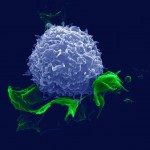Link to Pubmed [PMID] – 20964259
Eur J Gastroenterol Hepatol 2010 Nov;22(11):1290-6
BACKGROUND/AIMS: This study describes the types of therapy used in chronic hepatitis B (CHB) in France and patient characteristics according to therapy.
METHODS: This was a descriptive, multicenter, retrospective study in 1730 patients (54 centers). We collected information about demographics, epidemiology, severity of hepatitis B virus-related liver disease, antiviral therapy, response (hepatitis B viral DNA and alanine aminotransferase normalization changes), dose modification, or treatment interruption.
RESULTS: Approximately, 60% of patients enrolled had never been treated for CHB and 33.1% were currently receiving treatment (47% first line). Of those receiving treatment, 30% were receiving adefovir-lamivudine combination. Of those receiving first-line therapy, 40, 30, and 15% were receiving lamivudine, adefovir, or adefovir-lamivudine combination, respectively. Complete and partial virological responses were seen in 59 and 13% of patients, respectively. In patients having been treated at least once, biochemical response was seen in 45%. Lamivudine or adefovir-resistant mutants were detected in 32.6 and 22.1% of patients treated by these antiviral agents, respectively.
CONCLUSION: In France, among patients with CHB, we observed that one-third were receiving therapy, and, of these, 30% were receiving first-line (15%) or second-line (15%) adefovir-lamivudine combination therapy. This observation highlights that clinical practice is influenced by available scientific data on resistance induced by monotherapy.

